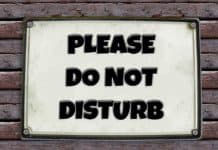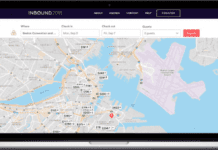
Shane Cragun is the founding principal and CEO of SweetmanCragun, a company that provides leadership and high-performance solutions tailored to today’s Age of Disruption.
In this Shakedown, Cragun compares an event’s relevancy to a melting iceberg. To keep an event from melting, he offers meeting planners advice on how to face the truth behind their event’s relevancy and how to control their event’s “melt rate” moving forward.
What is the No. 1 factor that will determine whether or not an event is “melting”?
I would say if attendance goes down, but the thing that will determine that is whether or not the topic is cutting edge. A cutting-edge topic mean that it’s new information. If I go to a meeting and they’re talking about cloud computing, I’d go, “Really”? That was hot last year.” If you really want to predict whether or not a corporate event is beginning to melt, you could predict it by the topic. Topics have to be real sexy—they have to be something that you had to go see and create word of mouth. You can also tell [if your event is melting] by enthusiasm. For instance, even if people attend, if they leave early, that shows they’re not very enthusiastic.
What are three key ways that meeting planners can recognize and get control of their melt rate?
The way you evaluate melt rates is metrics, so I would say the same thing. I think the metrics are attendance, enthusiasm and exciting topics. You want to make sure that your conference is talking about something that’s never been talked about. For instance, get a futurist there who will talk about the next 10 trends. That’s always a hit.
What are key ways that meeting planners can keep their events relevant?
We have a phrase that can be implied anywhere: no involvement, no commitment. Let’s say we’re a Fortune 500 company, and we’re inviting our top 1,000 managers. I would determine how to get their commitment and somehow involve them in the planning. I would send out an email survey to all of the managers about six months ahead of time and ask for suggestions for speakers. If I’m going to increase enthusiasm, I have to get their involvement. I could also create a contest for those who send in the best articles in regard to the topic they want to see.
How can meeting planners add value to their event for attendees?
This is important. There’s this model called the Whole Brain Model. Everyone sees things differently. The blue section of this model represents those who are very into analytics, and then there’s the green section, which shows those who are all about process and organization, and the bottom right addresses those who are about feelings. In other words, you need to make sure your event addresses the whole brain and make it obvious that you’re talking to all the groups.
Oftentimes, event planners plan events based on their brain. They may be a touchy-feely red and pull on heartstrings, but the other half is wondering what’s happening. There are four different thinking styles, so make sure you’re designing an event accordingly. If I’m going into Intel or Apple, I have a sense of the brain preference that’s going to be in the room—they’re going to want to talk numbers and strategy. But if I come into a [broader] organization, I need to make sure there are all four ways of thinking represented in my presentation. It is amazing how people will sit there, and then when I tap into their brain preference, they perk up.










